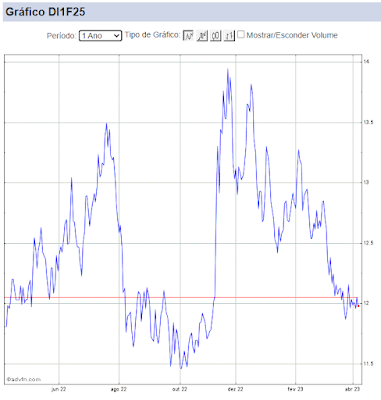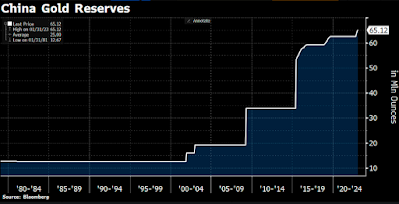Short term, no news is good news! Long term is less obvious.
Estive fora, em um evento externo,
nos últimos 2 dias. Assim, o comentário de hoje se estende um pouco.
A sazonalidade do verão no hemisfério
norte continua a favorecer uma baixa liquidez e movimentos menos acentuados. Na
ausência de novidades relevantes no cenário, este pano de fundo deverá
prevalecer.
Na Europa, a Bloomberg traz um artigo em
que especula sobre os potenciais próximos passos do ECB, cuja reunião será
amanhã. Segundo o artigo:
The ECB’s Frankfurt-based staff are examining scenarios for the future path of quantitative easing ahead of a Governing Council decision that is expected to take place in September or later, according to euro-area officials familiar with the matter. The people asked not to be named as the work is confidential. The analysis doesn’t mean a stimulus change is imminent. The staff’s preliminary work, which will be refined in coming weeks, includes the announcement of a tapering path, an extension of asset purchases at a reduced pace and a combination of strategies, two of the people said. Draghi himself will have the opportunity to set the stage for the September policy meeting when he attends the Kansas Federal Reserve’s symposium in Jackson Hole, Wyoming, on August 24-26.
Não vejo
pressa, neste momento, para a retirada de liquidez por parte dos bancos
centrais em G10 e, assim, nenhuma ruptura de curto-prazo, principalmente devido
a uma inflação corrente baixa. Contudo, acredito que este processo de
normalização monetária está em andamento, e deverá prevalecer nos próximos
meses. O recente afrouxamento das condições financeiras, especialmente nos EUA,
deve ser um vetor importante na função de reação do Fed.
No Brasil, os jornais trazem poucas
novidades relevantes. O IPO do Carrefour Brasil saiu no preço mínimo, a
despeito dos rumores de uma demanda elevada. A mídia continua ventilando
possíveis medidas de arrecadação, dado o cenário ainda preocupante das contas
públicas. O processo de privatização das hidrelétricas pretende arrecadar
R$30bi. De qualquer maneira, a meta fiscal deste ano ainda está em risco a
possibilidade de aumento de impostos é real e crescente.
No que
tange a política monetária, o mercado se prepara para a reunião do Copom na
semana que vem. Com a inflação corrente baixa, as expectativas de inflação
contidas e em queda, uma inflação prospectiva baixa (pelo menos para 2017 e
2018) e uma recuperação econômica lenta e gradual, as expectativas hoje
favorecem amplamente um corte de 100bps. A dúvida, neste momento, é qual a
comunicação que o BCB irá tomar após esta reunião.
No
médio-prazo, diria do terceiro para o quarto trimestre do ano, poderemos ter
uma conjunção de vetores menos positivos. A China aperta suas condições
financeiras e administra o crescimento de excessos e bolhas em setores
específicos. Passo o Congresso do Partido, em outubro/novembro, poderemos
observar uma desaceleração da economia. Os bancos centrais em G10 paercem
determinados em normalizar sua política monetária. Uma inflação mais elevada
poderia dar ímpeto a este movimento. O ECB é hoje o grande comprador marginal
de bonds. Um tapering poderia ter
impactos ainda não mapeados ou totalmente precificados ao redor dos mercado. Nos
EUA, a agenda legislativa está travada e própria sobrevivência de Trump poderá
ser questionada. Entre outros argumentos.
Vou
finalizar este texto com comentário do estrategista de FX do Morgan Stanley, um
dos mais respeitados na área:
Extreme positioning. The USD has fallen to its lowest level since September 2016. The
market is now the most USD bearish since April 2009 when our
positioning tracker records began, warning us not to jump on the bandwagon of
universal USD weakness. Differentiation seems warranted and hence we remain
confident on our bullish
USDJPY strategy. Tactically, it is important that the US 10-year yield has bounced from
its 2.25% 200-day MA support and Asian equity markets are turning green.
Today’s US data releases, such as building permits and housing starts, are both expected to register
growth after recent weakness. Markets expecting permits to come in at 2.8%M
(prev -4.9%) and housing starts at 6.2%M (prev -5.5%) and strong US
earnings reports should help USDJPY too. Meanwhile, the Trump administration seems
to be focusing on the tax reform with proposals likely
turning more concrete in early September. Our point is that US headlines can
hardly turn more negative from here. Expectations have reached a low point as
expressed by bearish USD positioning. From a contrarian point of view, selected
USD longs seems warranted.
Trading post QE. Moving away from QE and trying to normalise central bank
balance sheets should, in the
long-term, run against yielding assets and cause a repricing of risk. However,
consolidating central bank balance sheets must be understood within the broader
context of the combined commercial and central banks' balance sheets. It is the
aggregate which counts and investors should not forget what brought QE into
fashion. First, it was an emergency measure aimed at stabilising bearish
expectations. Second, the central bank money bump was in reaction to commercial
banks reducing their own balance sheets. The aim was to stabilise the aggregate
of commercial and central banks' balance sheets.
History does not repeat
itself, but it does rhyme.
Experience makes us wiser and hence investors and policymakers should look into
the rearview mirror to avoid making the same mistake twice. The 1936/37 Fed
reserve requirement increased tightened conditions too fast, pushing the
economy back into recession. This experience may be taken into account when
tapering followed by central banks' balance sheet reduction are ahead. Caution
will prevail. Against this measured approach stands the capital misallocation
risk. Experience of the NASDAQ and subprime bubbles show that capital
misallocation can store significant future deflationary potential. A repeat of
the creation of another
capital misallocation related deflation
shock should be avoided, too. DM central banks seem to have entered a
challenging run prone to mistakes. Yesterday, it was the former BoE’s
Blanchflower suggesting that the
Fed was making a big policy error by raising rates.
US real yield has declined, pushing real yields globally lower which should work
in favour of equity markets, suggesting that the EM inflow will intensify. Only
a few weeks ago, it appeared that the simultaneous rise of bonds and equities –
what is nowadays called the risk parity trade – was complete. Likewise,
investors preferring growth relative to value and the FANG trade all seem to be
back on the agenda, seeing the KRW benefiting. S&P revising Mexico’s
outlook to stable from negative has added to the risk bullish tone this
morning.
Reflation, reflation. Simultaneously, reflation signs have returned, not only expressed
by rising breakeven rates. The commodity markets also saw industrial material
prices breaking higher. China’s steel price has recovered losses seen from its
March high, iron ore has marched higher once again, and the outperformance of
the CSI 300 is due to China’s material stocks pressing higher. It is only oil
which continues to lag the trend as it deals with persistent signs of
overcapacity. Overnight, Ecuador became the first OPEC member to publicly defy
the cartel's agreed-upon production caps. While the country's increased output
should not affect prices, as the amount it agreed to cut is very small compared
to the size of global oil consumption, the move may prompt other small OPEC
nations to follow suit which, in combination with rising North American shale
energy supply, should keep oil offered relative to other commodities.


Comentários
Postar um comentário